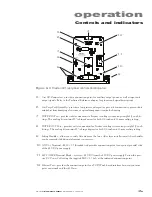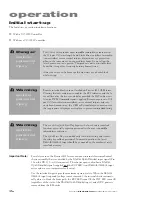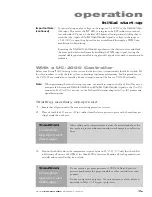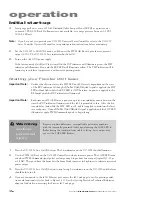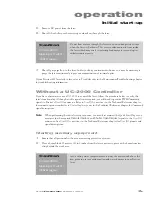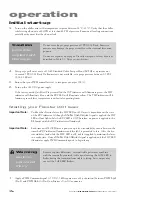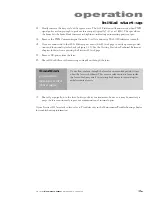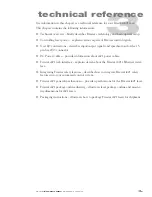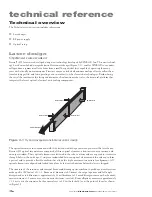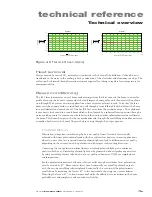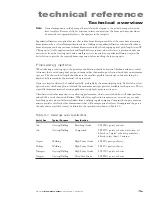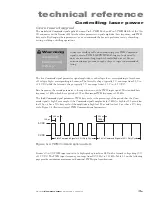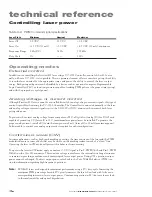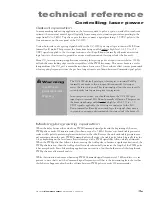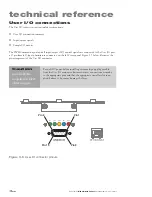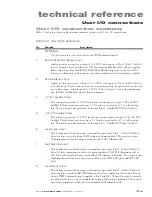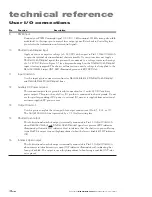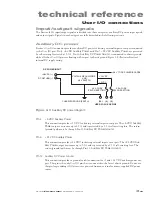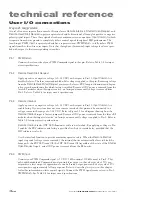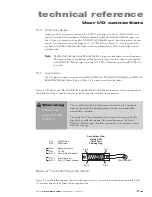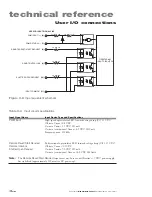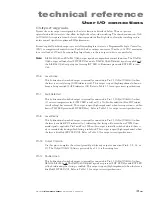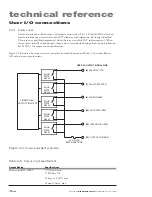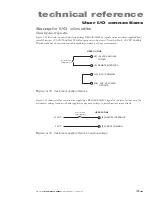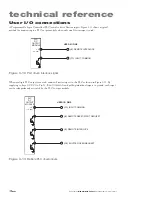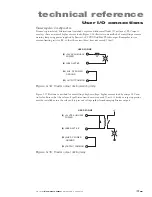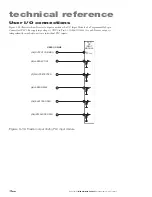
technical reference
3
7
Synrad
Firestar i401
operator’s manual
Controlling laser power
Command signal
The modulated Command signal applied between Pin 9,
PWM Input
, and Pin 1,
PWM Return
, of the
User
I/O
connector on the Firestar i401 laser has three parameters: signal amplitude, base frequency, and PWM
duty cycle. By changing these parameters, you can command the beam to perform a variety of marking,
cutting, welding, or drilling operations.
The first Command signal parameter, signal amplitude, is either logic low—corresponding to laser beam
off, or logic high—corresponding to beam on. The laser off voltage, typically 0 V, can range from 0.0 V to
+0.8 VDC while the laser on voltage, typically 5 V, can range from +3.5 V to +6.7 VDC.
Base frequency, the second parameter, is the repetition rate of the PWM input signal. The standard base
frequency is 5 kHz, which has a period of 200 µs. Maximum PWM frequency is 100 kHz.
The third Command signal parameter, PWM duty cycle, is the percentage of the period that the Com-
mand signal is high. For example, if the Command signal’s amplitude (at 5 kHz) is high for 100 µs and low
for 100 µs, it has a 50% duty cycle; if the amplitude is high for 190 µs and low for 10 µs, it has a 95% duty
cycle. Figure 3-4 illustrates typical PWM Command signal parameters.
0 VDC
5 VDC
100 µs
200 µs
200 µs
190 µs
5 kHz Command Signal at 50% Duty Cycle
5 kHz Command Signal at 95% Duty Cycle
Warning
serious
personal
injury
Always use shielded cable when connecting your PWM Command
signal source to
PWM Input/PWM Return
inputs. In electrically-
noisy environments, long lengths of unshielded wire act like an
antenna and may generate enough voltage to trigger uncommanded
lasing.
Figure 3-4
PWM Command signal waveform
Firestar’s
User I/O
PWM input consists of a high-speed optoisolator LED with a forward voltage drop (Vf)
of 1.5 VDC. The PWM input frequency can range from DC (0 Hz) to 100 kHz. Table 3-2 on the following
page provides minimum, maximum, and nominal PWM signal specifications.

